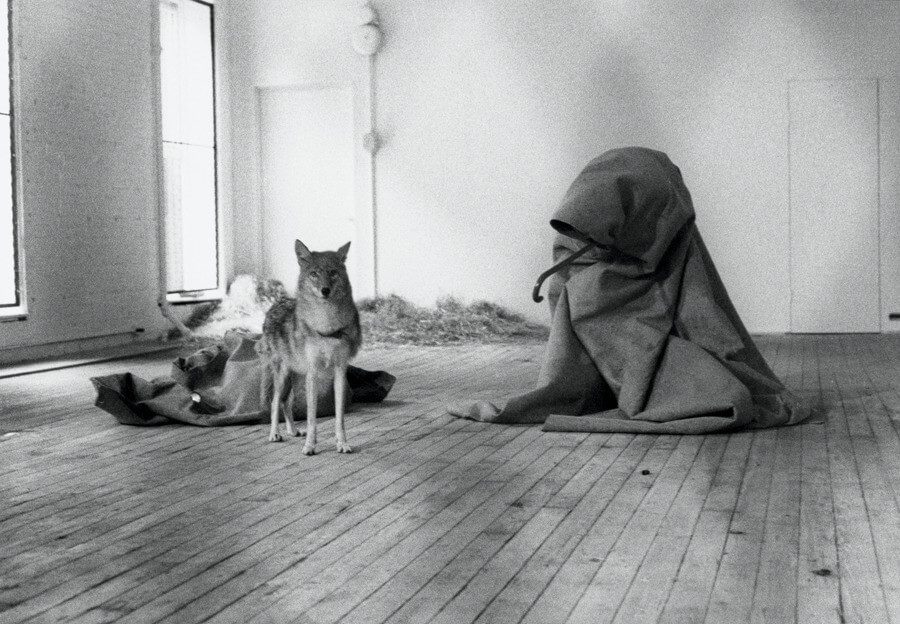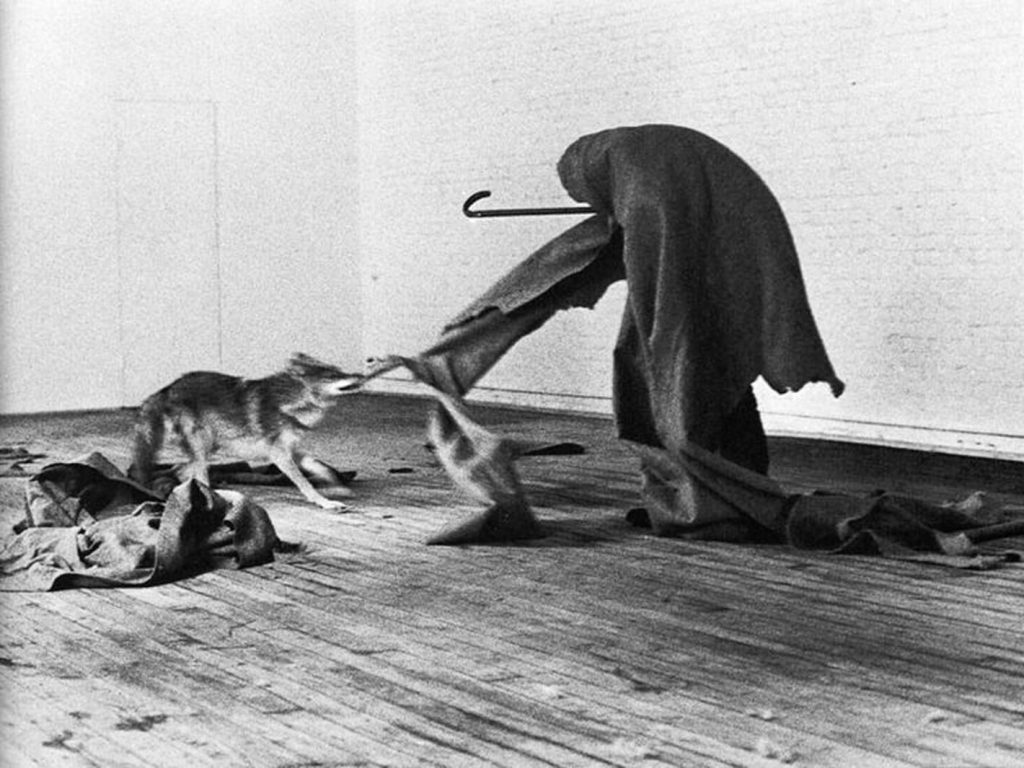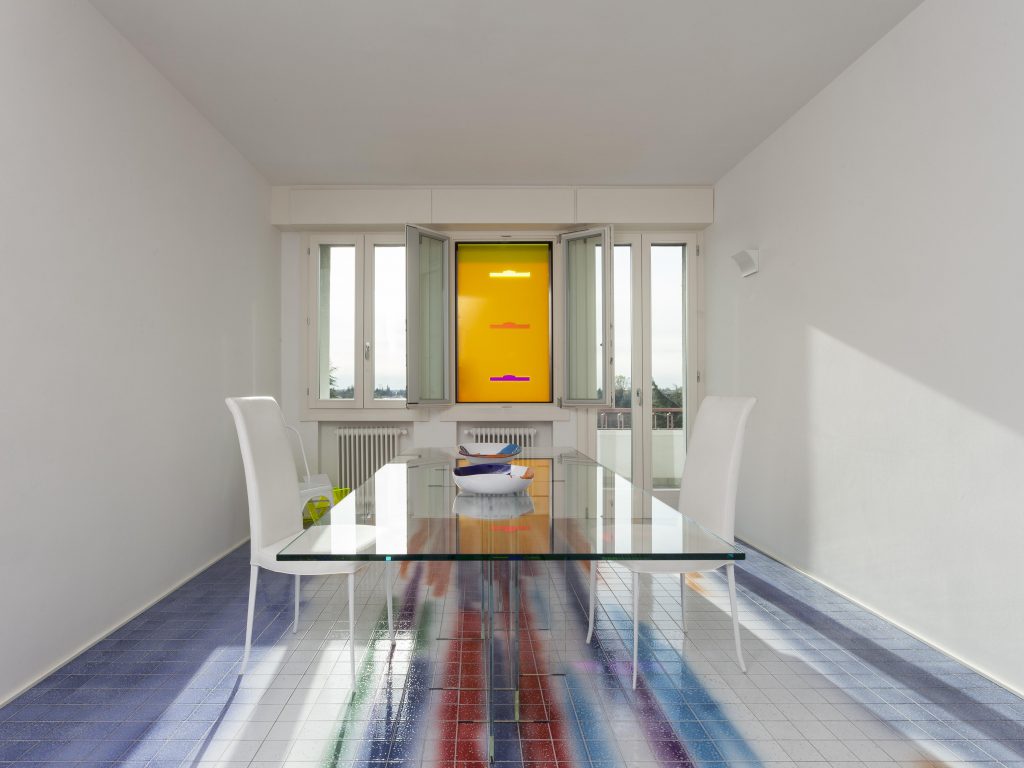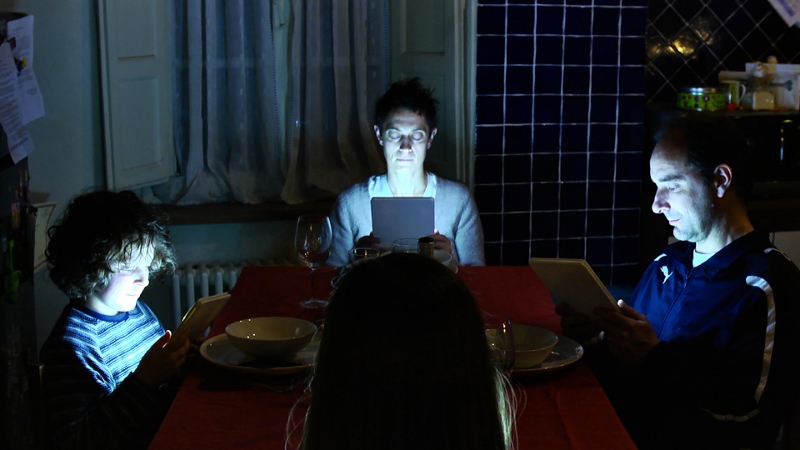Sometimes meaningful artworks can be recognized without speaking any words, and Joseph Beuys was able to do just that in I Like America and America Likes Me.
In May 1974 he held said performance at the René Block Gallery in New York City. He stayed there for eight hours each day, for three days, covered in a felt blanket. The space was small, but big enough to perform simple – but symbolic – gestures, such as walking with a stick like a shepherd, or better, like a shaman. The German artist shared the space with a coyote for the whole time and everything he did aimed at the inclusion of the animal in its reality.
The whole scenario must be considered on a symbolic level, taking into account the fact that symbols were a central element in Beuys’ production. The coyote is the most appropriate animal to represent the American spirit, and it is often associated with the indigenous communities who lived in the land before the arrival of the European colonizers. The felt reminds the artist the spiritual warmth. This material, in fact, is known for its insulating properties and Beuys assigned to it the ability to keep the warmth within the body and therefore to maintain the circulation of energy. On the other side, the gallery space was meant to be seen as the American land, and the artist himself as the counter image of the coyote. The main goal of this social sculpture – a term that Beuys used to adopt for the description of his performances – was to share ideas, possibilities, ways of living and of changing. For him, in fact, art is first of all a way to teach, a way to open people’s eyes to new alternatives, to change society for the better.
With I Like America and America Likes Me the artist wanted to shed a light on how in his days – and today as well I would say – the American people found it difficult to communicate, to find common ideals and actions, and they fell into discriminations which created boundaries hard to dismantle. For years the descendants of the American indigenous people were excluded from taking part in the ‘new’ American community, even if they had every right.

The main characteristic of the American land is its diversity, but if it is not fully exploited as the mean to stick everyone together, then the powerful example that America could be would simply turn out as a missed chance to bring people together. During the 70s the several ethnicities which coexisted in America could not communicate and were not able to find a stable connection with each other. The internal division that America was facing was also affecting international relationships – those were the years of the Vietnam war – making Americans more and more self-centered and forgetful of the value of their diversity.
With this performance, the artist wanted to share a message of solidarity and communion, showing everyone using the figures of the coyote and the shaman as an example, that through communication and acceptance coexistence is possible – as he did by living with a coyote in a small space. Living with a wild animal was obviously difficult, but an effort had to be made by both parties. The result? After three days the coyote changed its behavior towards the artist, from hostile to more accepting of his presence, getting used to the fact that there was someone else around.
After all, nature and humans are the same exact organism, and they are part of a reality greater than the mere sum of its parts. Only by accepting each other’s differences and with the ability to understand each other’s habits and surroundings, is it possible to fully exploit our potentials. Joseph Beuys’ message was that of showing us all that we are part of a single reality, that our origins are the same, and that we can understand each other only if we tune in together, if we can ‘feel’ our opposite. For these reasons I find the verb ‘feel’ more appropriate for the description of the artwork, rather than ‘like’: it’s not about liking the American soil, but about feeling part of the same land. A deep and meaningful connection is the first step towards a better society. After all, the coyote has always been a part of us: we just decided to forget about it a long time ago.




